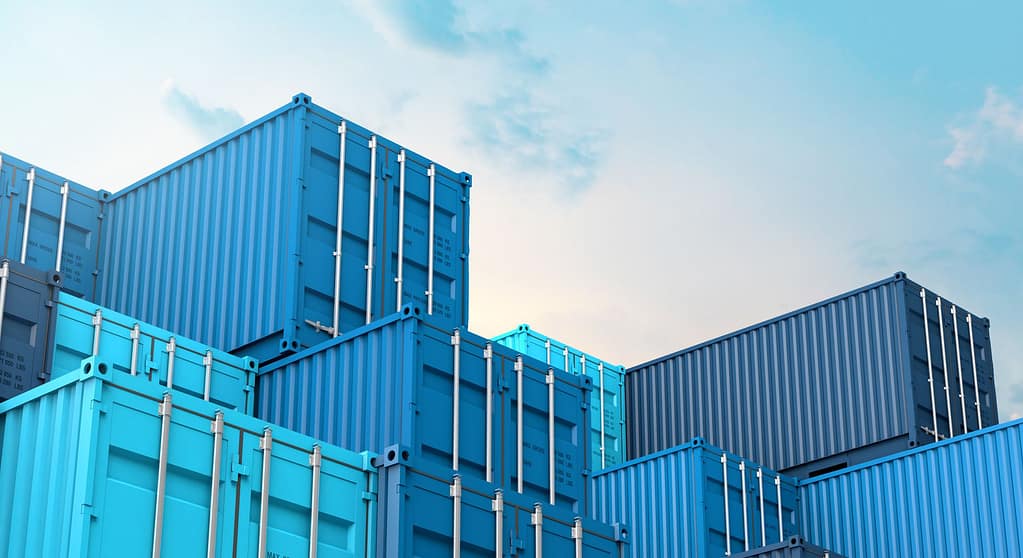Road, rail and sea containers
The market is dominated by two container sizes: 20- and 40-foot containers as both can used for rail, ship and truck transports. When considering what type, size and dimensions to choose for a shipment, the by far most common will be, depending on weight and volume, 20’DC or 40’DC, or alternatively 40’HC (high cube).
Size and dimensions for freight and sea containers
The dimensions and sizes of the following freight and sea containers are approximate:
20 ‘container (DC, DV, GP)
Outer dimensions: L: 6058 mm, W: 2440 mm, H: 2590 mm
Inner dimensions: L: 5890 mm, W: 2350 mm, H: 2390 mm
Volume: 33.2 kbm
Floor area: 13.86 m2 (146 sq ft)
40’DC, DV
Outer dimensions: L: 12192 mm, W: 2438 mm, H: 2590 mm
Inner dimensions: L: 12030 mm, W: 2350 mm, H: 2390 mm
Volume: 67.7 kbm
Floor area: 26.3 sqm (285 sq ft)
40’HC, HQ
Outer dimensions: L: 12192 mm, W: 2438 mm, H: 2896 mm
Inner dimensions: L: 12032 mm, W: 2352 mm, H: 2695 mm
Volume: 76.2 CBM
Floor area: 26.3 sqm (285 sq ft)
20 ‘reefer – refrigerated container for temperature-sensitive goods
Outer dimensions: L: 6058 mm, W: 2438 mm, H: 2590 mm
Inner dimensions: L: 5430 mm, W: 2290 mm, H: 2220 mm
Volume: 26 CBM
40 ‘reefer HC refrigerated container for temperature-sensitive goods
Outer dimensions: L: 12190 mm, W: 2440 mm, H: 2900 mm
Inner dimensions: L: 11560 mm, W: 2280 mm, H: 2544 mm
Volume: 59.3 CBM

Tips when packing freight containers
The dimensions of the door opening on a freight container are not as high as the height of the container. Therefore, keep in mind that not all sizes of packages can be loaded with a 100% degree of filling. It must also be easy and fast to load and unload the goods. For larger packages that do not create a sufficiently good degree of filling, you can consider booking an Open Top container instead.
Please also consider the weight. While the goods may fit, the container can still be too heavy. For 20’ and 40’ containers, the weight should not exceed 24 tons and 26 tons respectively (both including the weight of the container). For Road transport, check if there are restrictions on how much weight is allowed to drive on the roads.
Also, ensure suppliers invest in good quality packaging. It is both smart and cheap insurance, as long transit times and harsh handling can create unnecessary problems.
FAQs
What are the most common container sizes used for shipping?
The most common container sizes used for shipping are 20-foot (20′ DC) and 40-foot containers (40′ DC), with 40′ HC (high cube) also being frequently utilized.
What are the dimensions of a 20-foot container?
A 20-foot container has outer dimensions of approximately 6058 mm (L) x 2440 mm (W) x 2590 mm (H) and inner dimensions of about 5890 mm (L) x 2350 mm (W) x 2390 mm (H).
What should I consider when packing a freight container?
Consider the dimensions of the door opening, weight limits (24 tons for 20′ containers and 26 tons for 40′ containers), and ensure good quality packaging for protection during transit.